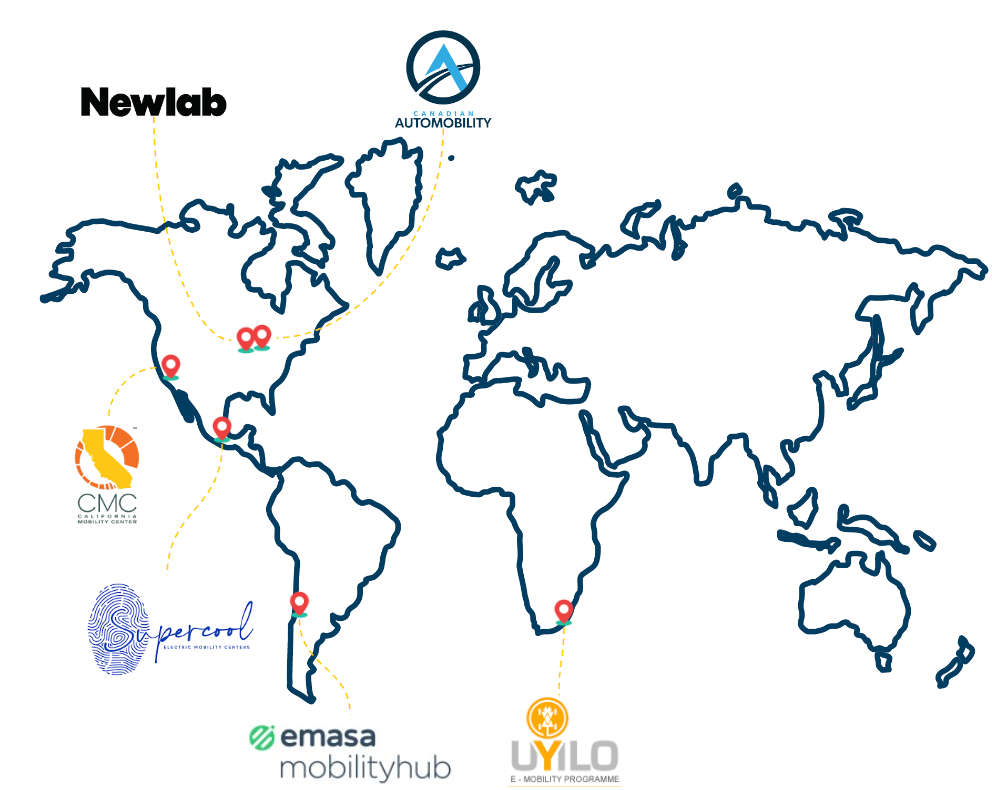Blog: Mobility Innovation Hubs Align Industry, Government, Academia
Tuesday, May 14, 2024
Energy + Mobility
By Diana Páez and Dana Gorodetsky
A new report from WDI’s Energy Team highlights e-mobility innovation hubs in low- and middle income countries adapting to the energy transition
Autonomous, connected, electric and shared. These tsunami-like trends — which go by the acronym ACES — are reshaping the landscape of mobility.
Of these trends, “electric” is arguably one of the most advanced, in low- and middle-income countries (LMICs) and developed markets alike, and is the primary focus of our mobility-related work on the Energy team at WDI. We analyze opportunities and enablers related to the transition to electric mobility (e-mobility) and help stakeholders spot and tap into new opportunities to play a role in this exciting and quickly evolving space.
In our discussions with companies and entrepreneurs, academia, government, and other actors involved in e-mobility around the world, most are eager for new ways to collaborate with the ultimate goal of spurring innovation in this space. In this context, the role of mobility innovation hubs — as platforms for collaboration, conveners or enablers — is worthy of study and analysis to help inform the successful evolution of existing mobility innovation hubs and the design of others.
In a new report we’re publishing today, Mobility Innovation Hubs: Catalyzing Future Mobility, we examine six such hubs around the world, looking at their key features and business models, and drawing insights about the types of benefits and costs associated with different models.
FIGURE 1:
Mobility Innovation Hubs featured in the report

What are mobility innovation hubs and what can they offer?
Actors in an ecosystem all have roles to play in managing changes brought about by the trend toward e-mobility. But as with any major transition, new players can help spur innovation. Mobility innovation hubs can bring new thinking, new resources, and new ways of working to take advantage of new opportunities. These hubs come in different forms depending on their specific goals and the context in which they operate, but have some features in common. Broadly speaking, they exist to bring together and support players in their ecosystem such as entrepreneurs, small and large businesses, investors, government, academia, others) to advance shared goals in the areas of future mobility. They may be standalone non-profit or for-profit organizations or partnerships, and they engage in a variety of activities depending on their audience and goals. Among the hubs we feature, business and technology support for commercialization and scale up of new mobility solutions are among the most popular services; these include consulting services, ramp-up manufacturing facilities and equipment, testing environments for new products or services, and product showrooms. Several also offer co-working space for entrepreneurs and companies, training opportunities, and events for industry members and the general public.
How hubs can support the broader ecosystem
Mobility innovation hubs are carving out new spaces and roles in the ecosystems in which they operate. While not all hubs engage with all types of players in an ecosystem, they can provide value to all, as we note below. These hubs can also support other aspects of an ecosystem such as the infrastructure, policy framework and workforce. On the issue of infrastructure for example, hubs provide space and equipment to support companies and strengthen networks through convenings. Hubs can also improve public-private sector collaboration by bringing together government and companies, thereby supporting policy frameworks. And with respect to the local workforce, hubs also help upskill and reskill the local talent and build talent pipelines.
FIGURE 2:
Value that hubs can provide in their ecosystem

What did we learn?
In our report we share details of the six hubs examined in Detroit, US; Windsor, Canada; Sacramento, US; Puebla, Mexico; Santiago, Chile; and Eastern Cape, South Africa. This will help you understand what type of initial investment is needed for such an endeavor, what kinds of revenue sources can support hub operations, and the range of services that can be provided by a hub. We also share key insights and takeaways for those interested in establishing a new hub in their area, including how to determine the value proposition and how to position it in the local ecosystem. At the same time, we recognize that it may not be feasible or beneficial to create a new organization in every context, so we also include recommendations for actions that existing players can take to support their local ecosystem for e-mobility.
We look forward to following the evolution of the hubs featured in this report and invite you to reach out if you are part of a different hub or interested in applying the findings to your context. We are excited about the opportunities to push the boundaries of innovation and create new platforms for stakeholders to catalyze collaboration to drive e-mobility around the world.
This report was developed as part of WDI’s Chihuahua Charging Forward project with the State of Chihuahua in Mexico. You can learn more about this project here.

Dana Gorodetsky
Program Manager, Energy

